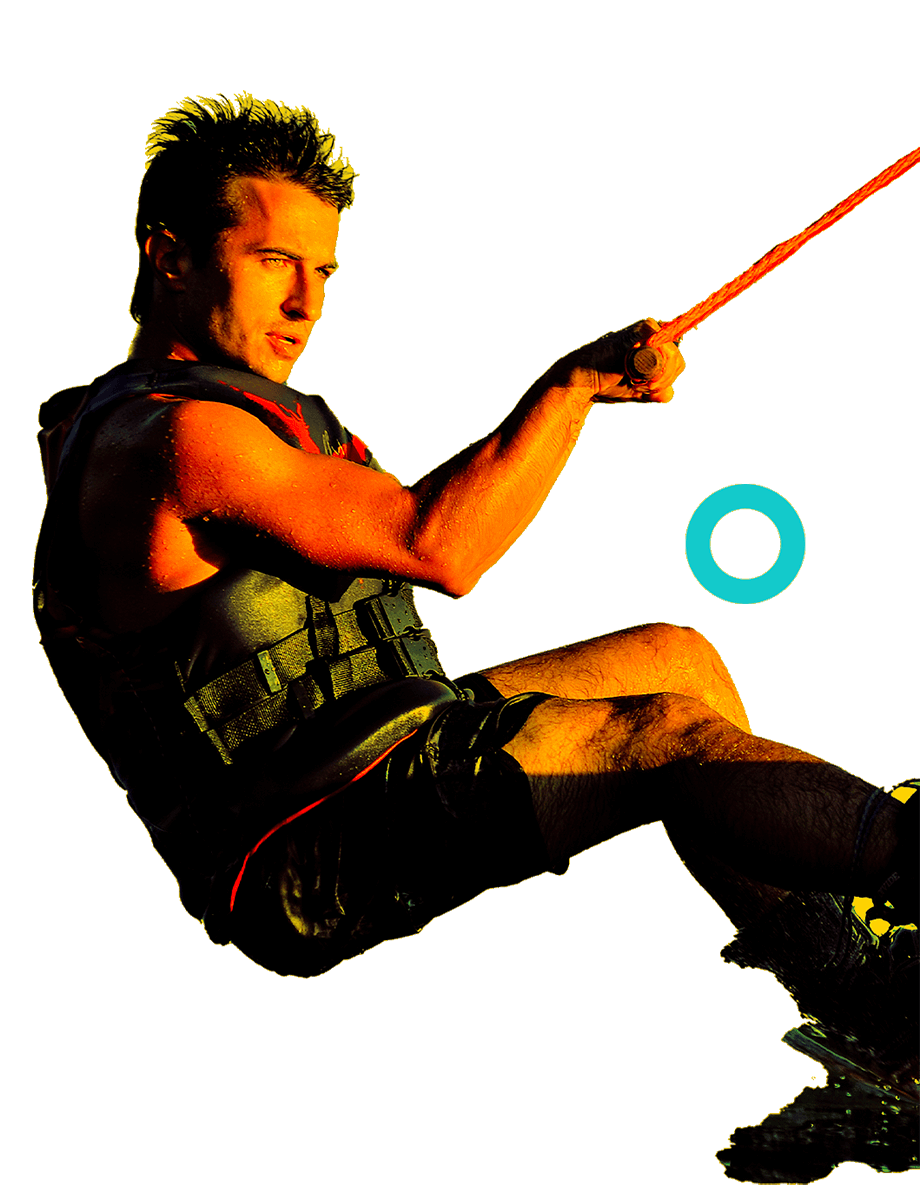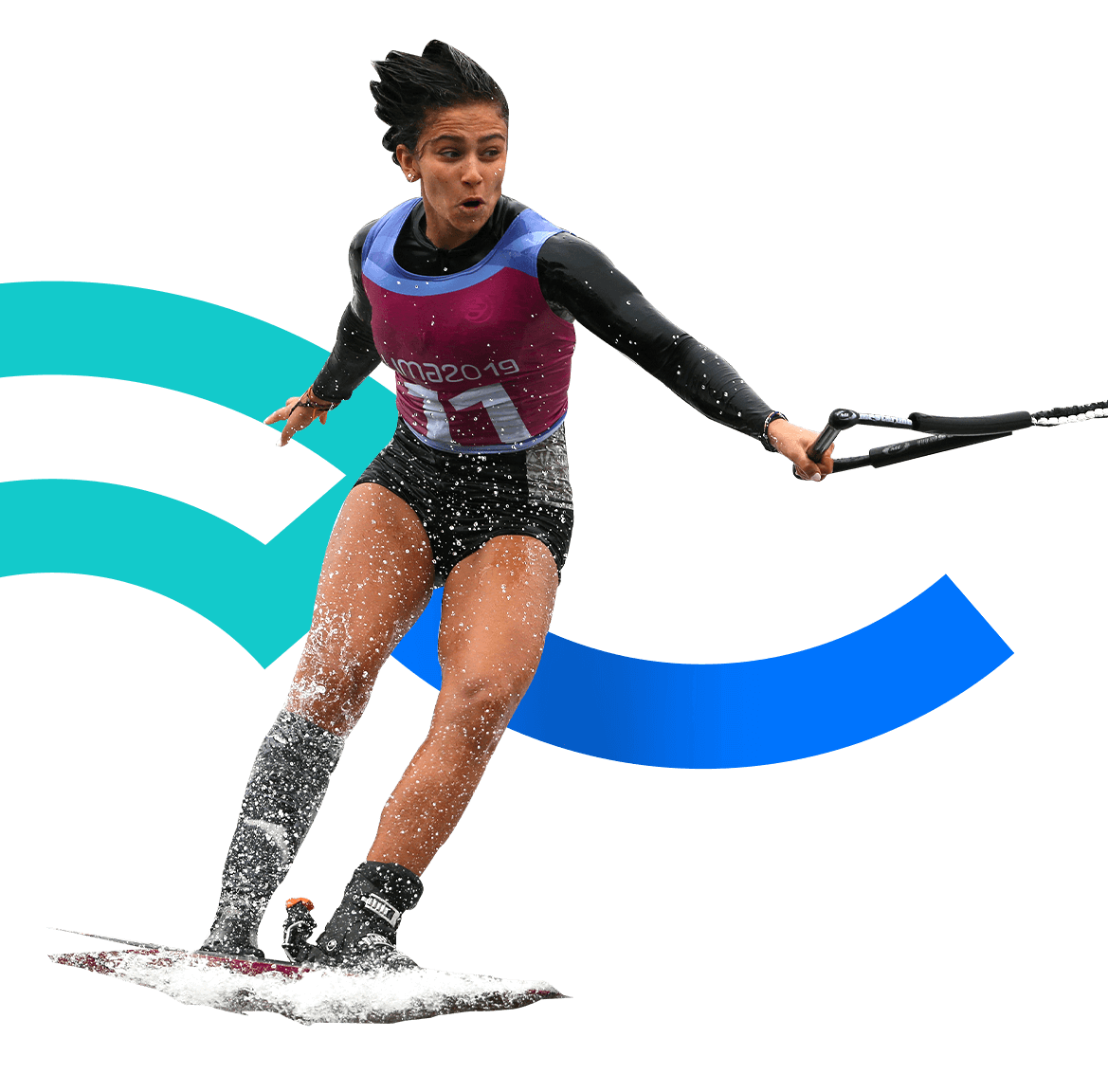Water Ski
and Wakeboard
Water Ski and Wakeboard are sports that can be practiced in a lake, artificial or natural lagoons with calm waters that have the minimum
specific measurements.
While practicing them, balance and power are developed, since the arms and legs are being used in their practice, also requiring: physical strength, technique and reflexes that make them one of the most complete sports. Athletes that practice them are holding on a rope, and riding one or two skis, or a board, and slide over water, pulled by a speedboat.







